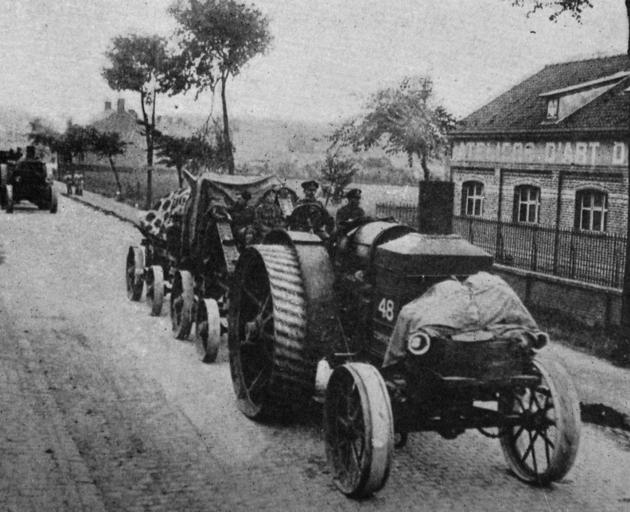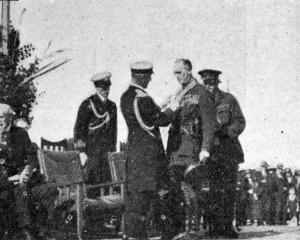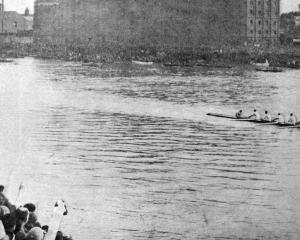
The cablegrams had prepared us for heavy casualty lists in connection with the fighting at Passchendaele a fortnight ago, when the New Zealanders and Australians were taken at a sudden disadvantage, owing to stress of weather affecting the state of the terrain and owing to the perhaps unavoidable lack of reinforcements.
These lists, now coming to hand, will be scanned with emotions touched and differentiated in some degree by thought of the special circumstances in which the losses occurred.
At Messines, and later at Gravenstafel, the New Zealanders were engaged on a triumphant enterprise, in which they carried all before them, and the casualties represented the price which even victory must pay for its gains.
But at Passchendaele our soldiers had no easy march to the desired objective. To less heroic troops, one of the correspondents at the front has written, the marshy land over which the New Zealanders advanced would have been impassable. The line was a vast sea of brown mud, many square miles in extent.
Everywhere it was ankle deep, in places neck deep. When to that is added the fact that the troops were checked by encountering uncut wire entanglements, before which they were exposed to a heavy machine-gun fire, some faint conception may be formed of the awful experience they suffered.
Virtually trapped, they were called upon to display the enduring valour of their race without the inspiring environment of triumphant achievement; and many a gallant lad must have fallen, knowing that he had not had what is called a sporting chance.
Nobly, dauntlessly, characteristically, the New Zealanders stood the test. The soldiers must have known, perhaps not in this case that someone had blundered, but at least that the accidents of the elements and other fortunes of battle were hopelessly against them. Honour, abiding honour, to them, the dead and the living! As to all who valiantly face the great issue, for death or life.
Exotic fare
Food problems are not vexing us in New Zealand, not yet. But it is well to be prepared. If ever we are to eat rats and mice and such small deer, the mind must assimilate the notion in advance.
A book called "The Wild Foods of Great Britain'' is being noticed favourably by the British press. How soon may the people have to come to wild foods. It is well to know that "the leaves of the common hawthorn may be eaten like watercress, but are best in salad: that bulrushes may be pickled; that the berries of the rowan-tree make a very excellent preserve.''
Interesting, if not more important, it is to learn that "the thighs of grasshoppers lightly fried in butter and sprinkled with pepper and salt are palatable enough''.
Edible frogs and snails - there is nothing new in that. Snails, it appears, can be baked or boiled or used to make soup; or they may be "picked out of their shells with a fork and swallowed whole like oysters''. Further. "young brown rats make a satisfactory article of diet''.
Well, at sea, I myself have seen rats that had been disembowelled, skinned, and spread-eagled with a little skewer, hanging up in the fore rigging like sheep in a butcher's shop.
Later, cut into segments and treated in the galley, stewed with bits of ship's biscuit, they would appear in the forecastle menu as a component of "lobscouse''. It is by inclining their ear to facts of this kind that the people of the British Isles may lean to smile at the Kaiser's submarine blockade. - Civis
Native locusts
The native locusts are this year more numerous on the Port Hills, Canterbury, than they have been for many years. On the eastern slopes of the Cashmere Hills spur, and right up the gully, they rise continually on a sunny day.
A few years ago they were fairly numerous up the gully, but in nothing like the numbers that are now to be seen. The absence of fires on the hills for several years, and the amount of cover there is, through the prolific growth of grass, probably accounts for their increase.
Rat fashion
French ingenuity is turning to account even the rats that infest the trenches at the battlefronts. The pelts of these marauders, it is announced, will be transformed into a fur to be called "gaspardine''. The fashion-makers predict that this will be the most stylish wear in furs next winter.
- ODT, 27.10.1917.












